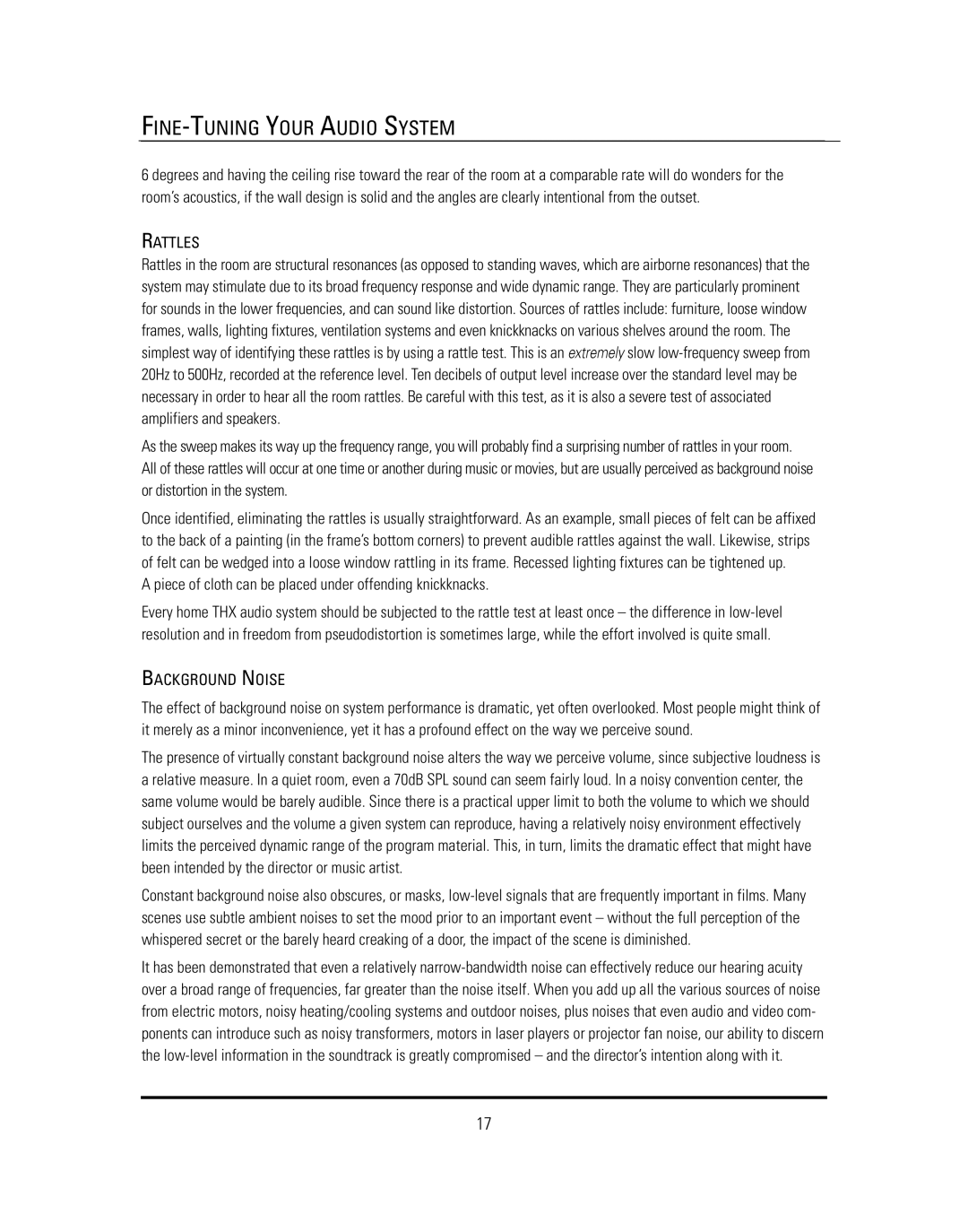
FINE-TUNING YOUR AUDIO SYSTEM
6 degrees and having the ceiling rise toward the rear of the room at a comparable rate will do wonders for the room’s acoustics, if the wall design is solid and the angles are clearly intentional from the outset.
RATTLES
Rattles in the room are structural resonances (as opposed to standing waves, which are airborne resonances) that the system may stimulate due to its broad frequency response and wide dynamic range. They are particularly prominent for sounds in the lower frequencies, and can sound like distortion. Sources of rattles include: furniture, loose window frames, walls, lighting fixtures, ventilation systems and even knickknacks on various shelves around the room. The simplest way of identifying these rattles is by using a rattle test. This is an extremely slow
As the sweep makes its way up the frequency range, you will probably find a surprising number of rattles in your room. All of these rattles will occur at one time or another during music or movies, but are usually perceived as background noise or distortion in the system.
Once identified, eliminating the rattles is usually straightforward. As an example, small pieces of felt can be affixed to the back of a painting (in the frame’s bottom corners) to prevent audible rattles against the wall. Likewise, strips of felt can be wedged into a loose window rattling in its frame. Recessed lighting fixtures can be tightened up.
A piece of cloth can be placed under offending knickknacks.
Every home THX audio system should be subjected to the rattle test at least once – the difference in
BACKGROUND NOISE
The effect of background noise on system performance is dramatic, yet often overlooked. Most people might think of it merely as a minor inconvenience, yet it has a profound effect on the way we perceive sound.
The presence of virtually constant background noise alters the way we perceive volume, since subjective loudness is a relative measure. In a quiet room, even a 70dB SPL sound can seem fairly loud. In a noisy convention center, the same volume would be barely audible. Since there is a practical upper limit to both the volume to which we should subject ourselves and the volume a given system can reproduce, having a relatively noisy environment effectively limits the perceived dynamic range of the program material. This, in turn, limits the dramatic effect that might have been intended by the director or music artist.
Constant background noise also obscures, or masks,
It has been demonstrated that even a relatively
17
